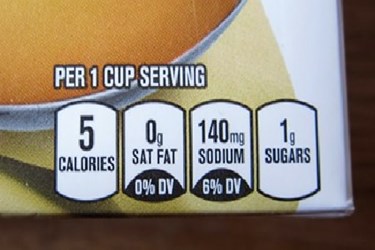How Front-Of-Pack Labeling Influences Purchasing Choices
By Isaac Fletcher, contributing writer, Food Online

It shouldn’t come as a surprise that visuals and labeling on packaging play important roles in influencing purchasing decisions. However, recent studies reveal front-of-pack labeling may play the defining role in many purchasing choices
According to recent research, parents may be making unhealthy food choices for their children as the result of misleading impressions from front-of-pack information. As fewer consumers use nutritional facts labels when making food purchasing decisions, it is important to understand front-of-pack labels as marketing tools and how they influence consumer choices.
Insights from studies on the subject indicate that the various approaches food manufacturers use on packaging are perceived very differently by parents than the way they are perceived by children. Particularly, parents may employ strategies and understanding to apply meanings to different visuals, but often still draw incorrect conclusions. While most parents want to provide their children with healthy snacks, many front-of-pack visuals may lead parents to believe a snack is healthy rather than part of the junk food category, which, in turn, leads to poorer food choices.
To be more specific, parents are more likely to label foods with bright packaging or a character on the label as being less healthy. In a study led by Katie Abrams of Colorado State University, the research team found that, “Although the food industry has reduced its television advertising, the use of television and game characters on food packaging is prevalent and, according to this study’s participants, highly persuasive to preschool children. Known characters and other fun visuals are recognized by children, and some parents reported these appeal to the child even if they are not familiar with the food.”
Conversely, packaging that displays health claims, graphs, or a statement of being natural are perceived as being healthier. Health claims and more-natural looking designs establish a perception that the product is healthier than it really is. For example, front-of-pack visuals that show realistic-looking fruit on the label are perceived as being a better alternative to packaging that displays characters or fun colors.
It is not necessarily the case that parents take labels and health claims at face value, but the first impression those labels make are often instrumental in purchasing decisions. Accordingly, advertising healthy or fresh foods by using playful visuals could actually be detrimental to the product, as parents are likely to associate this packaging style with unhealthy foods.
The researchers conclude that, “For those who want to provide a healthier snack, parents are persuaded by the health claims, visuals, and claims about ingredients’ naturalness (e.g. realistic graphics of fruit, earth tone coloring, etc…), and using familiar ‘fruit’ brands or cross-branding with products associated with health and education.”
